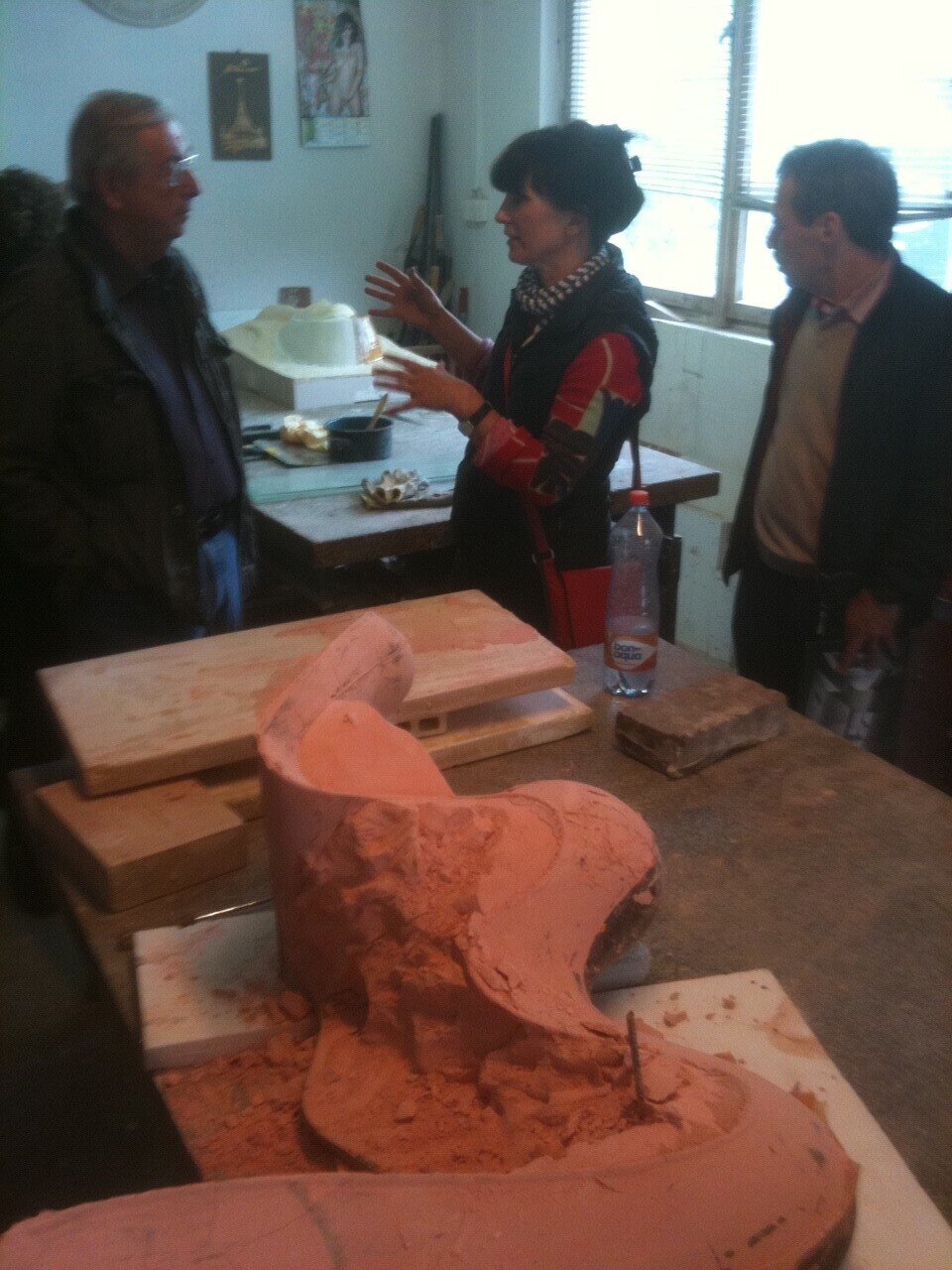a studio visit to the Czech Republic!
“Glass offers many secrets to unlock. You experiment, learn something new, and constantly educate yourself. But you can never be overconfident about what you know – about glass, or new cultures.”
photo: Jim Schantz
“I grew up in the town of Potštejn [east of Hradec Králové]. As a child, I would roam along the banks of the local river. I had my own world, a microcosm of a family life, which, until I was fifteen, played out across an area of just a few kilometres.”
From Prague….
…to the studio in the north-eastern Bohemian town of Železný Brod, is a beautiful drive.
As a young woman, Klumpar worked as a jewelry designer for a glass maker, before joining the Academy of Arts, Architecture and Design in Prague. She studied at the Stankslav Libenský Studio, where she learned her craft and found inspiration from the famous glass artist Jaroslava Brychtová.
“For me, she was a model strong woman. Libenský taught us students in Prague, drawing and sketching designs for the couple’s architectural work, while Brychtová was in Brod working in glassworks, modeling, talking to the people in the factory, which was otherwise a man’s world. I really admired her.”
It was 1985 when Klumpar moved to the US with her infant son, Matyas, and her then husband, Michael Pavlik, also a glass artist. After learning how to adjust to the different working conditions in the States, the family moved to Massachusetts from Delhi, New York. “We purchased a house there with a large barn, where we built some studios, a superb cutting room, and we even built some glass melting furnaces.”
At the Novotny casting studio.
“From the individual parts of the process: creating a mould, through to the quality of the molten glass batch, through to setting the correct melting and cooling curves, all the way to cutting and polishing – all of this requires a team of people.”
Klumpar begins by creating a drawing, followed by a small mock-up in paper or other material.
This is a clay model in progress…
…and here is a sculpture partially removed from the plaster cast.
“…sometimes this [scale-model] is from clay, other times I use plaster. These models are then used to make a mould from a mix of glass sand and special plaster, which is then baked. For large models, an armature, wires and mesh are used to fortify the mould. The mould needs to be properly dried before placing in the furnace. Sometimes the process takes weeks. Afterwards, the mould is filled with molten glass, and thus begins a long process of computer-assisted melting and cooling.”
“The sculpture heads to the cutting room, where it is refined for weeks, or even months – until it is completed to my satisfaction.”
Klumpar works with the Novotný Studio, a highly respected casting and coldworking studio in Železný Brod.
After the piece is removed from the plaster cast, it is ground and polished in the cold shop.
Over the years, Vladimira has lived in Mexico and Portugal, and continues to visit those places still. However, she has returned to her mother-land to live and work. “The more of these kinds of workshops and studios are founded here, the greater the chance that cast glass sculpting will be preserved for future generations”, insists Klumpar, whose son, Matyas Pavlik, also a glass sculptor, is helping to preserve the future of cast glass techniques learned in the Czech Republic.
_____________________
Thank you to the Kuzebauch Gallery in Prague for permission to share this video.
Works currently available at Schantz Galleries
SELECTED COLLECTIONS
• Corning Museum of Glass, Corning, NY
• Lannan Foundation, Palm Beach, FL
• Wustum Museum of Art, Racine, WI
• Mint Museum of Art, Charlotte, NC
• American Arts and Craft Museum, New York, NY
• Museum of Art, Liberec, Czech Republic
• North Bohemian Museum, Jablonec and Nisou, Czech Republic
AWARDS and GRANTS
• 1991 New England Artist Foundation Fellowship
• 1991 Massachusetts Artist Foundation Fellowship
• 1997 Pollock-Krasner Foundation Grant
COLLECTIONS
Museum of Decorative Arts, Prague, Czech Republic
Seven Bridges Foundation, Greenwich, CT
Mikulově, Mikulov, Czech Republic
Glass Museum, Nový Bor, Czech Republic
North Bohemian Museum of Liberec, Liberec, Czech Republic
Museum of Glass and Jewelry, Jablonec nad Nisou, Czech Republic
The Corning Museum of Glass, Corning, NY
Lannan Foundation, Palm Beach, FL
Racine Art Museum of Art, Racine, WI
Mint Museum of Art, Charlotte, NC
American Arts and Craft Museum, New York, NY
Cafesjian Museum Foundation, Yerevan, Armenia












